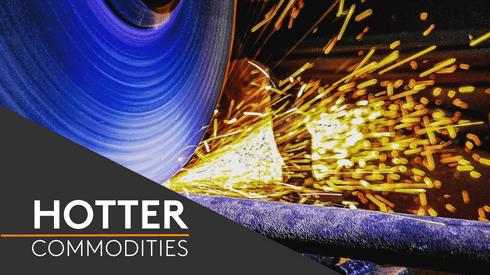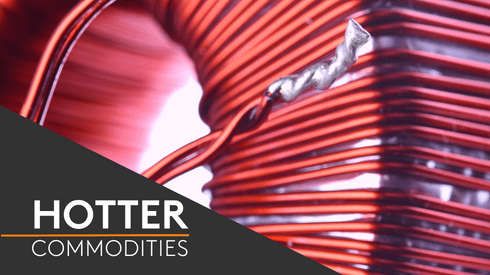End consumers, particularly original equipment manufacturers (OEM), are now increasing scrutiny of suppliers and their sustainable credentials, while producers of raw materials such as copper look to implement operational changes that enable “greener” production of material.
Some producers, such as Boliden in Europe, now offer specific low-carbon copper products, which the company guarantees contains less than 1.5 kilograms of CO2 per kg of copper.
Questions are therefore emerging within the market whether there is a need now for surcharges to be built into contracts for such low-carbon material, as seen in markets such as aluminium and steel, which have now begun being factored into long-term contract negotiations.
Discussions of green copper premiums are nothing new for the global copper market, with participants pointing to previous moves by Codelco to introduce similar-style products, though this did not result in any dramatic change to the copper market.
“We’re not talking about something never seen before,” one producer told Fastmarkets, “I’m just not sure the market is ready for this sort of thing.”
Attention is firmly on the supply side of the market though, with consumers under continued pressure by shareholders to improve emissions and environmental footprints.
Speaking on the sidelines of the recent Fastmarkets European Battery Raw Materials Conference, one automotive company told Fastmarkets that “over 80% of our emissions are now scope three; it’s an area we’re really trying to bring under control.”
“It is clear that we are entering a new era for metals trading,” one European trader said.
Montanwerke-Brixlegg moves first
A major statement of intention in this space was announced earlier in September, when recycler and cathode refiner Montanwerke-Brixlegg announced that they would be introducing a new low-carbon premium for their products.
“It has become common sense that the global path to net zero carbon emissions is inevitable – and copper will play a key role in this transition,” the company said in a notice to consumers seen by Fastmarkets.
The company announced in September that it would be introducing a €295-($283)-per-tonne premium for its copper cathodes on an FCA basis next year, with an additional surcharge built in to reflect any change in energy prices for their plant.
“We have achieved a quite good carbon footprint, we set a global benchmark [for carbon footprint] and we split the market into climate-sensitive consumer markets and non-climate sensitive consumer markets,” Uwe Schmidt, Montanwerke-Brixlegg board member, said on a panel discussion when asked about the new premium at the Fastmarkets Copper Conference in Barcelona on September 22.
“At the moment, the climate-sensitive consumer market is still small compared with the traditional consumer market, which is quite big, but this will completely change,” Schmidt added.
“This move completely changes our business model, but we think it is the right approach at the right time,” he said.
Montanwerke-Brixlegg is not the only one within the market that shares this view.
“The copper market is clearly splitting in two over low vs high carbon,” a second trader in Europe commented, “the issue, though, is whether premiums will diverge alongside this.”
“I think it is a logical next step, we are seeing it working in other markets,” one source told Fastmarkets.
In fact, one move supporting the need for differentials for brands which meet sustainability credentials is the London Metal Exchange’s recent move to delist brands which no longer meet their responsible sourcing standards.
The move comes as the LME looks to ensure that its brands list meets its minimum requirements to ensure fairness and the continuing accuracy of LME pricing.
“I think there is a difference between this responsible sourcing and the rest of ESG [environmental, social and governance],” Georgina Hallet, LME head of sustainability, said on the panel.
“We hear a lot now that risk and compliance departments, investment firms, etc, won’t trade or invest in metal which cannot prove that it was responsibly sourced,” Hallet added. “I think that’s almost past that premium point, because you’re talking about a discount [on those materials] there rather than a premium.”
Hallet noted that the question now was whether the responsibly sourced and ESG-friendly material becomes the market norm rather than a premium product, pointing to the bourse’s partnership with trading platform Metalshub, where participants can trade metal on the basis of ESG requirements.
“I think we’re a bit early for that [regarding premiums for ESG-friendly copper], it doesn’t feel like that is materialising yet,” Hallet said.
Others in the market believe that the change is on the horizon, however.
Challenges to green copper
Others within the market are not so confident though.
A key challenge to the introduction of upcharges for sustainable copper is the lack of a clear definition or accepted standard for what sustainable means.
“Who is deciding what is sustainable and what is not sustainable? At the moment, you can make your own definitions,” one trader in the region said.
While there are industry bodies, such as the Copper Mark, that companies can join to prove via third-party assurances that material has been produced using responsible practices, this is by no means an accepted global standard on sustainability.
The situation is further muddled when aspects such as social acceptability is taken into consideration.
2022 has seen considerable volatility in physical copper premiums following the Russian invasion of Ukraine in February, which resulted in many participants reportedly employing “self-sanctioning” towards Russian material, opting instead to import copper from regions like South America.
Copper grade A cathode premiums on a cif Rotterdam basis reached an all-time high of $85-125 per tonne on July 26 as a result of this change in dynamics.
But following soaring energy prices within Europe as a result of the Russian invasion of Ukraine, an increased sense of price sensitivity emerged among some consumers, who reportedly turned to cheaper brands of material due to pressure on their margins.
The result of this was a widening of premium ranges, with Fastmarkets’ most recent copper grade A cathode premium, cif Rotterdam assessed at $50-100 per tonne on October 4.
“At the end of the day, price is king,” a second source told Fastmarkets.
“It is not certain in my opinion that customers will accept such higher terms for ‘green’ material in the current climate,” a fourth trader added.






